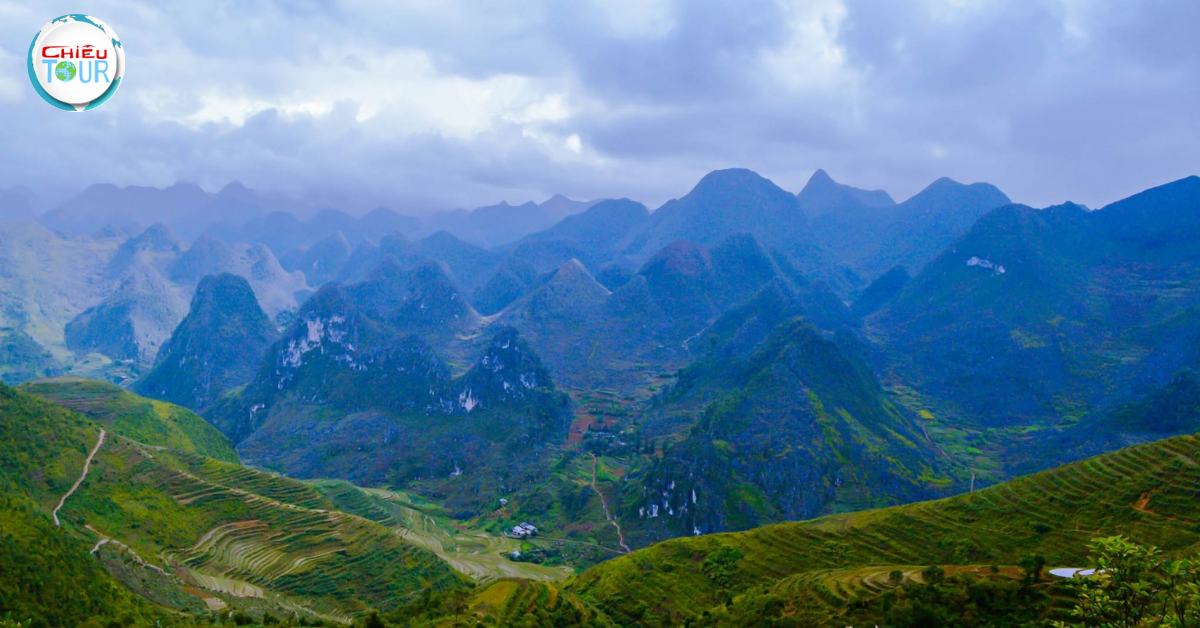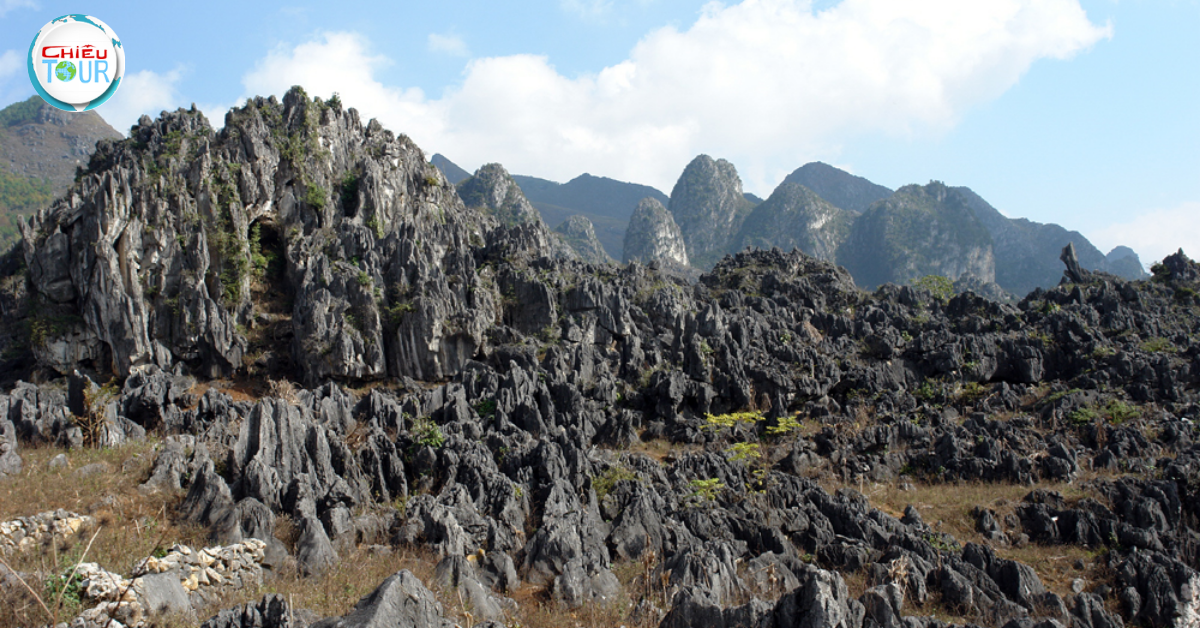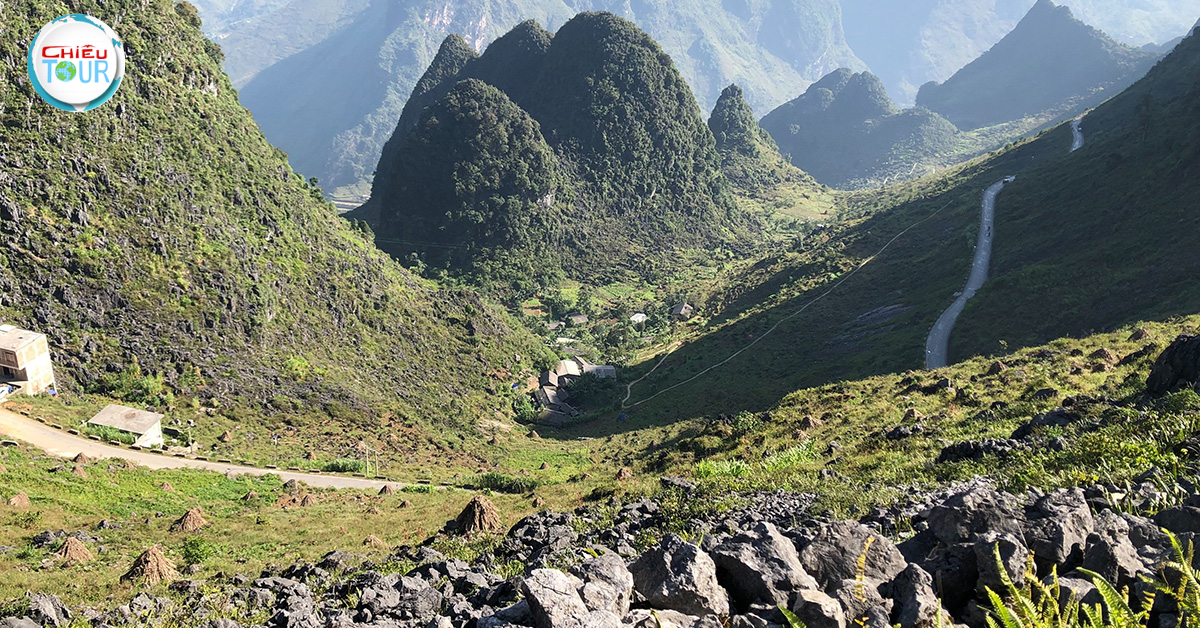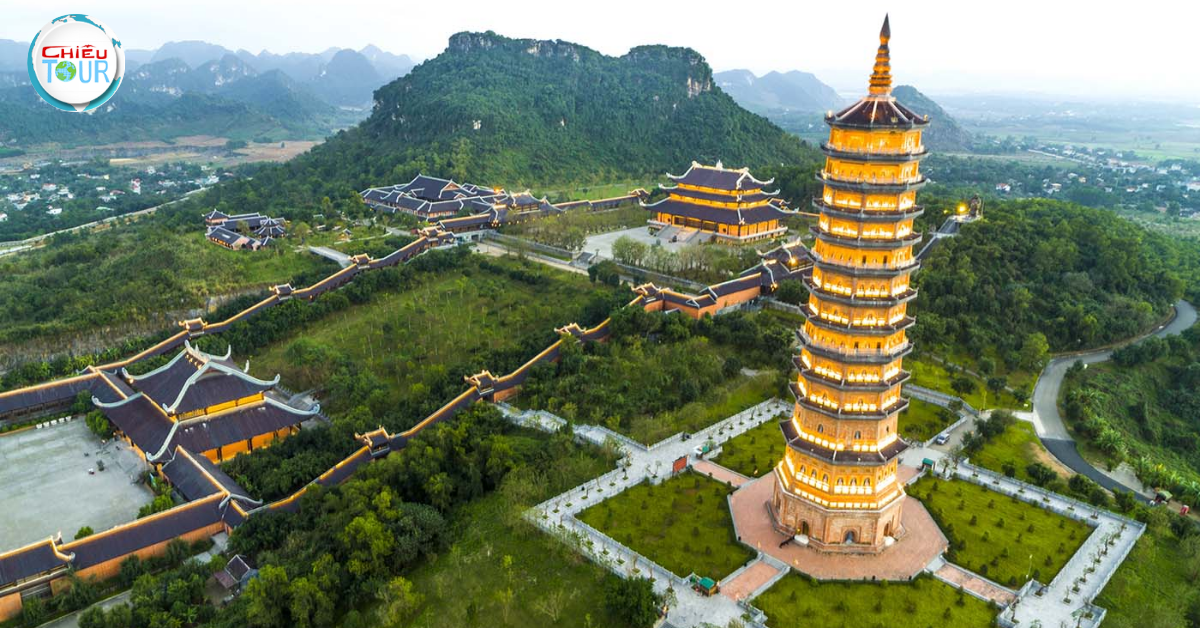Discover Đồng Văn Karst Plateau – A Global Geopark
- Author: Admin
- | Hot destination
Nestled in the far northern reaches of Vietnam, Đồng Văn Karst Plateau is a destination that captures the imagination with its rugged landscapes, cultural diversity, and geological significance. Designated as a UNESCO Global Geopark in 2010, this highland region in Hà Giang Province offers travelers an unparalleled experience of natural beauty, human history, and vibrant ethnic traditions. Whether you are an adventure seeker, a culture enthusiast, or a nature lover, Đồng Văn Karst Plateau promises an unforgettable journey.

A Geological Marvel
Đồng Văn Karst Plateau spans over 2,356 square kilometers and is home to one of the oldest and most significant karst formations in Southeast Asia. Approximately 80% of the plateau’s surface is limestone, some of which dates back over 400 million years. The area’s dramatic topography, with its sharp peaks, deep valleys, and limestone outcrops, has been shaped by millions of years of tectonic activity and erosion. This unique geology has earned Đồng Văn its prestigious status as a Global Geopark, highlighting its importance in the study of Earth’s history.
Visitors can explore remarkable formations such as the Lung Cu Flag Tower, which stands proudly on a hilltop, offering panoramic views of the surrounding landscapes. Another highlight is the Ma Pi Leng Pass, often referred to as the "King of Passes" for its steep cliffs and breathtaking views of the Nho Quế River below. These geological wonders not only provide stunning scenery but also offer insights into the Earth’s ancient past.

A Tapestry of Cultures
Beyond its geological significance, Đồng Văn Karst Plateau is a vibrant cultural hub, home to 17 different ethnic groups, including the Hmong, Tay, Dao, and Lo Lo. Each community has preserved its unique traditions, language, and way of life, contributing to the region’s rich cultural mosaic.
One of the best ways to experience this cultural diversity is by visiting the traditional markets held in towns such as Mèo Vạc and Đồng Văn. These markets are more than just places of trade; they are social gatherings where locals in colorful traditional attire come together to exchange goods, share stories, and celebrate their heritage. The vibrant atmosphere, coupled with the array of handmade crafts, local produce, and traditional dishes, makes these markets a must-visit.
The plateau’s villages, such as Lạo Xa and Sìn Chải, offer travelers a glimpse into the daily lives of the local people. Here, you can learn about traditional farming methods, observe intricate weaving techniques, and even participate in cultural activities such as traditional dances and festivals. The Lung Cu village, located near the iconic flag tower, is particularly notable for its historical significance and cultural heritage.

Natural Beauty and Outdoor Adventures
For nature lovers, Đồng Văn Karst Plateau is a paradise waiting to be explored. The region boasts a diverse ecosystem with rare and endemic species of flora and fauna. Its forests, rivers, and limestone caves create a picturesque setting for various outdoor activities.
Hiking and trekking are among the most popular activities, with trails that lead you through terraced rice fields, rocky landscapes, and remote villages. The journey to Ma Pi Leng Pass is particularly rewarding, offering awe-inspiring views of the mountains and the winding Nho Quế River. For those seeking a more leisurely experience, cycling through the scenic valleys is a fantastic way to soak in the beauty of the plateau.
The area’s caves, such as the En Cave and Lung Khuy Cave, provide an exciting opportunity for spelunking. These underground wonders reveal stunning stalactites and stalagmites, showcasing nature’s artistic prowess. Meanwhile, the tranquil rivers and streams offer opportunities for kayaking or simply enjoying the serene ambiance.

Local Cuisine
No trip to Đồng Văn Karst Plateau would be complete without savoring the local cuisine. The region’s food reflects the simplicity and ingenuity of its people, using locally sourced ingredients to create hearty and flavorful dishes.
One iconic dish is "thắng cô," a traditional Hmong soup made with beef or buffalo meat, combined with a variety of herbs and spices. Another must-try is "mắn ngô," a type of steamed corn cake that pairs perfectly with honey or local tea. For adventurous eaters, the region also offers unique delicacies such as grilled bamboo-tube rice and wild mountain vegetables.
Local drinks, including corn wine and Shan Tuyet tea, are also worth trying. These beverages not only complement the meals but also provide a deeper connection to the land and its people.
Preserving a Treasure
While Đồng Văn Karst Plateau continues to attract visitors from around the world, efforts are being made to ensure its preservation. Local authorities, in collaboration with UNESCO, have implemented measures to promote sustainable tourism and protect the region’s natural and cultural heritage. Visitors are encouraged to respect the environment, support local communities, and participate in activities that contribute to the plateau’s long-term conservation.
Planning Your Visit
The best time to visit Đồng Văn Karst Plateau is from October to April, when the weather is cool and dry. During this period, you can also witness the beauty of the buckwheat flower season, as the landscape is transformed into a sea of pink and white blooms.
Reaching Đồng Văn typically involves a journey from Hanoi to Hà Giang City, followed by a scenic drive through winding mountain roads. While the journey requires time and effort, the reward is an experience that is both enriching and unforgettable.
Whether you’re marveling at ancient karst formations, immersing yourself in local culture, or simply taking in the breathtaking views, Đồng Văn Karst Plateau offers an adventure like no other. This UNESCO Global Geopark stands as a testament to the harmonious coexistence of nature and humanity, inviting travelers to discover its timeless beauty and enduring spirit.
Planning Your Visit
The best time to visit Đồng Văn Karst Plateau is from October to April, when the weather is cool and dry. During this period, you can also witness the beauty of the buckwheat flower season, as the landscape is transformed into a sea of pink and white blooms.
Reaching Đồng Văn typically involves a journey from Hanoi to Hà Giang City, followed by a scenic drive through winding mountain roads. While the journey requires time and effort, the reward is an experience that is both enriching and unforgettable.
Whether you’re marveling at ancient karst formations, immersing yourself in local culture, or simply taking in the breathtaking views, Đồng Văn Karst Plateau offers an adventure like no other. This UNESCO Global Geopark stands as a testament to the harmonious coexistence of nature and humanity, inviting travelers to discover its timeless beauty and enduring spirit.
Upcoming Events and Festivals
To further enrich your visit, consider timing your trip to coincide with one of the region's many festivals and cultural events. The Buckwheat Flower Festival, held annually in November, celebrates the blooming of the iconic flowers that blanket the plateau. This festival features traditional music, dance performances, and handicraft exhibitions, offering a deeper understanding of the local culture.
Another significant event is the Khau Vai Love Market, a unique tradition where people from different villages gather once a year to rekindle old romances, form new connections, and celebrate love in its many forms. This vibrant gathering is a testament to the enduring traditions and deep cultural heritage of the ethnic communities.
Practical Tips for Travelers
Transportation: Renting a motorbike is one of the best ways to explore the plateau at your own pace. Ensure you have proper riding experience and safety gear, as the roads can be challenging.
Accommodation: Options range from homestays in local villages to guesthouses in towns like Đồng Văn and Mèo Vạc. Staying in a homestay offers a more immersive cultural experience.
Packing Essentials: Bring comfortable trekking shoes, warm clothing (especially during the cooler months), and a good camera to capture the stunning landscapes.
Local Etiquette: Respect local customs and traditions. Always ask for permission before photographing people, and dress modestly when visiting villages and cultural sites.
By planning carefully and embracing the spirit of adventure, your trip to Đồng Văn Karst Plateau will be a truly unforgettable experience.
 Vietnam
Vietnam 





